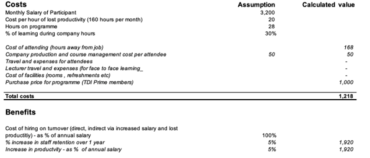R3’s partnership with ChainThat is one giant leap for insurance!
Operational inefficiency is killing insurance
Friction. The non-conservative force that resists movement and turns work into wasted energy. In business terms, friction means inefficiency and cost. The rise of Fintech and InsurTech has been fueled by the challenge to remove friction from business transactions.
Enter Blockchain. The distributed ledger technology that promises new ways for businesses to work together. Transparent, trusted, immutable. The unique characteristics of blockchain provide qualities that remove friction from the value chain of many industries. Especially insurance.
Which is why, IMHO, it is significant that R3 has embraced the insurance industry. And why it is significant that one of their first partnerships is with insurance blockchain development house, ChainThat.
In an exclusive for the Digital Insurer, I spoke last week with Ryan Rugg from R3 and Dave Edwards of ChainThat. Ryan is the global head of insurance for R3 who joined the consortium about a year ago. Dave is the co-founder and product lead of ChainThat.
I started by asking Ryan what R3 were doing in insurance (after all, they’re a banking platform, right?). “It’s fair to say that R3 started with a focus on banking,” Ryan explained, “but now the mix has changed. We’ve been building a blockchain platform for all financial services.
“When I joined R3 and started to talk with insurers, it was clear that they had many of the pain points as banks, which was great news for insurers.We had already started working on solving business problems that insurers would benefit from.
“R3 were already ahead of the game for insurance!”
The importance of standards
One thing that R3 (correctly) understood from the outset was the importance of industry standards for the global insurance market. Just as they are in the global banking market. Which is why R3 formed a partnership with ACORD, the industry leaders for insurance standards.
(For those that don’t know of ACORD, they are a non-profit organisation that provides the global insurance industry with data standards, tools and solutions that lead to more efficient operations between all parties).
The partnership with ACORD is significant because it created R3’s Centre of Excellence for (Re) Insurers. This is a dedicated area for (re) insurers to research, experiment on, and design Distributed Ledger Technology applications that will boost the efficiency of insurance processes, including claims handling and data management.
Ryan explained more. “The partnership with ACORD is a really big step forward for us. It allows R3 and ACORD members access to the work we are doing across the whole of financial services in distributed ledger technology. For us in R3, we already have over a dozen insurance firms as members and this partnership with ACORD will help accelerate the speed of implementation through the use of standards.
“All this feeds into R3’s dedicated team specifically looking at insurance and how we develop business functionality on the CORDA platform for insurers. The strategy for this is through partnership with blockchain experts and firms.
“This is why we have entered into a strategic partnership with ChainThat.”
R3’s Corda is a financial grade distributed ledger
When R3 started out, they looked at all of the blockchain/DLT platforms in the market to see which one would be suitable for the unique demands of financial services. It’s no secret that R3 didn’t find anything that would satisfy their security, scalability and speed requirements.
Which is just as well that they’d been developing their own DLT solution in parallel, as a kind of hedge if they couldn’t find a suitable platform.
Their own platform was called Corda. In R3’s words, “Corda is an operating system for financial markets using distributed ledger technology. It is the outcome of over two years of intense R&D by R3 and 80 of the world’s largest financial institutions.”
The following video will play in a separate tab on r3.com
For more on Corda, I recommend you read the Corda Non-Technical White Paper, which you can find here. The abstract from paper sums Corda up succinctly;
A distributed ledger made up of mutually distrusting nodes would allow for a single global database that records the state of deals and obligations between institutions and people. This would eliminate much of the manual, time consuming effort currently required to keep disparate ledgers synchronised with each other. It would also allow for greater levels of code sharing than presently used in the financial industry, reducing the cost of financial services for everyone. We present Corda, a platform which is designed to achieve these goals.
Where do ChainThat come in?
As Ryan explained, the R3 strategy is to partner with blockchain technology experts and firms to add financial industry business functionality to Corda. With Corda as the foundation layer, ChainThat sits at the top of the enterprise stack.
Dave explained it me, “ ChainThat have developed a lot of business functionality on blockchain technology specifically for the wholesale, commercial and specialty (re) insurance markets based on ACORD data standards and processes. We’re able to demonstrate how distributed ledgers improve operational efficiency and effectiveness, not just talk about it.
“However, ours is not a solution that one party can use in isolation. It needs a consortium approach with at least 3 initial members to deliver benefits. We can achieve this working with the R3 consortium and by building our solution on the Corda network.”
Dave makes a great point here. It’s like mobile phones. Being the only one in the world with one is pretty pointless. The value comes when someone you know has one too! In this analogy, R3’s Corda can be seen as the mobile network running all the cellular masts and ChainThat are the provider of mobile phones to use the network.
For ChainThat and R3, this means starting with a minimum of a broker and 2 (re) insurers from the outset. And the current plan is to have these foundation members on board in the next month or so, leading to an MVP in October and pilot by the end of the year. All things being equally, it’s feasible that the first production operations will start early next year.
For more on ChainThat’s solutions, go here to see what they’ve done in Placing, Contract Management and Schemes. Or you could read my articles here and here on ChainThat and blockchain’s impact on the insurance industry.
One step at a time
Blockchain adoption was always going to be a slow process. That’s inevitable despite the promise of nirvana and the second Internet effect. You just have to transport yourself back to 1995 and the emergence of the Internet to establish context. Think about how much supply-chain, commerce and financial services has changed since then (well maybe not all of financial services, much of it still operates pre-Internet!). My point is that 20 years ago, futurists talked about the art of the possible in an Internet enabled world, but the world didn’t change overnight. It took time.
The same will happen with blockchain, one step at a time.
For R3 and ChainThat, the journey to a fully integrated, blockchain enabled, insurance value chain, starts with Accounting and Settlement for commercial insurers. I asked Dave and Ryan why they started here?
Ryan started, “We started with accounting and settlements as a focus use case because it has a close alignment to the work we’ve done across other areas of Financial Services and other Fintechs.”
Dave continued, “From all our discussions with insurers, if we’d started with something like Placing, for example, it could prove contentious internally. Insurers have invested a lot in tech platforms to handle processes like Placing, which makes the decision to replace a difficult one. Accounts and Settlement processes are an easier starting point that delivers tangible results quickly. It is a good first step for the insurers adopting a distributed ledger strategy.
“It is also a business process that requires broker participation, who are being overlooked by some of the other blockchain solutions out there.”
OK, but what problem are they solving?
Any investor will tell you that the key question for any start-up/new venture is “what problem are you really solving?” So, I posed the question to Dave and Ryan.
Dave: “The issue is that insurers and brokers don’t always know who owes what and to whom? In commercial, wholesale and specialty there is a lot of double keying and duplication. Misunderstanding creeps in along the value chain and all too often the cover placed at the front end does not match the liability recorded at the backend.
“This makes reconciliation a real issue for everything from collecting and paying premiums to settling claims.“
(It doesn’t help meeting Solvency II obligations either!)
Ryan: “This is a business issue that we see across all financial services. It’s not a new problem and this is not the first time someone has tried to solve it. But with distributed ledger technology, we do see for the first time, a way to address this massive cost and inefficiency issue.
“For insurers today, there’s a complete lack of visibility of their liabilities and obligations. There’s also a lack of transparency across the business. This is where the regulators get particularly upset and are demanding better from insurers.”
Ryan makes a great point about the regulators (it’s a subject I covered recently in this post). Regulators want to see that the organization has control over its operations. All too often the solution is for insurers to spend a small fortune on consultants and auditors to piece together some semblance of reporting across complex operations from disparate systems.
Ultimately, this all has a negative impact on the insurer’s expense ratio.
Which when it comes down to it, is the problem that ChainThat and R3 solve. Improving the insurer’s combined ratio.
Today’s insurance industry expense ratios are simply too high at 25-40% of premium (earned or written). It’s no longer sustainable in a world of InsurTech where platforms are automating core insurance operations. You only have to look at personal lines and the Lemonade story. Operating as a tech platform, Lemonade take 20% of GWP to run the entire business of providing insurance, nothing more, nothing less.
One small step for a man, one giant leap for mankind
Regular followers know that I’m an advocate of blockchain technology. I believe it is the next most influential technology to impact the way the world works.
This partnership between R3 and ChainThat, in itself, is a relatively small step. Yet it offers the potential of a much greater impact to the insurance industry over time. Why? Because it is the first step on the way to creating a network of business operations that span corporations, jurisdictions and markets.
Today, insurers (and banks) run in silos, discrete from one another both inside and outside their ecosystems. Nobody can rely on anyone else, which creates the need for systems and effort to verify trust. In turn, this leads to duplication, inefficiency and a massive cost burden that could be removed if trust was a given.
With this partnership and the imminent release of Corda 1.0, insurers now have a means by which they can embrace blockchain technology. And see for themselves the benefits of frictionless business operations.
The author, Rick Huckstep, is the Chairman of The Digital Insurer, a keynote speaker on the world of InsurTech, and advisor and investor to technology start-ups.
Disclaimer: Rick Huckstep is a strategic adviser to ChainThat



























































